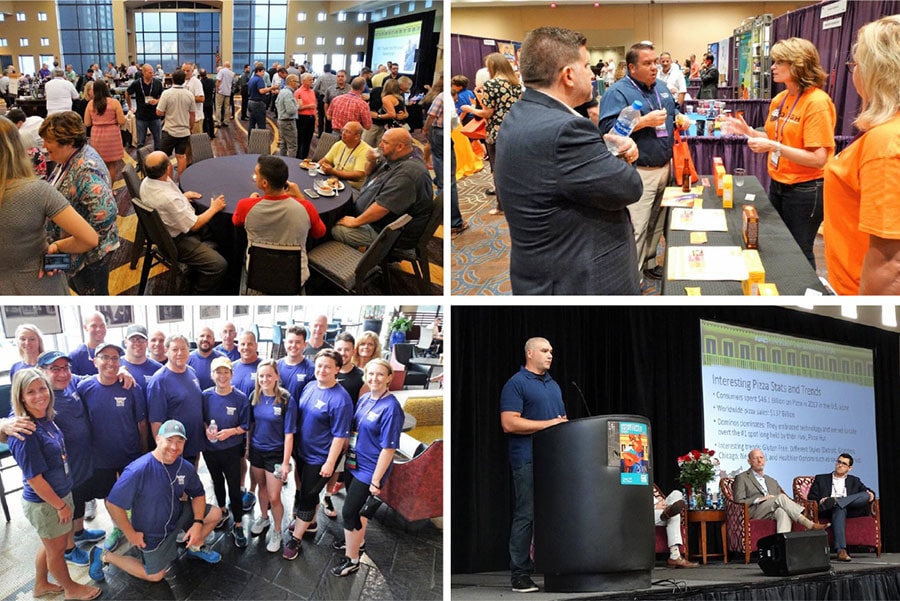Pulling off A Big Meeting with Little Resources

 Daniel C. Borschke, FASAE, CAE Executive Vice President National Association of Concessionaires
Daniel C. Borschke, FASAE, CAE Executive Vice President National Association of Concessionaires
There are many articles, blogs and business guides that offer advice on how to run effective meetings and even more on meetings that produce results. But the bulk of those articles appear to be written for organizations with seemingly endless budgets. What happens when you need to pull off a big meeting with little resources? To find out, FORUM turned to Daniel Borschke, FASAE, CAE, executive vice president of the National Association of Concessionaires (NAC). Borschke shared his organization’s story and tips for not letting scarce resources get in the way of executing an event that delivers.
NAC’s annual big event is the NAC Concession and Hospitality EXPO which features 20,000 square feet of trade show space for 100 booths, a 400-person General Session and numerous breakout sessions and leadership meetings. This summer event rotates around the country, preferring to use “big box” hotels, since convention centers have not worked well for the group in the past and their discerning membership of concessionaires.
The NAC has aggressive goals, anticipating results of at least a $250,000 return on investment. How do they make it all happen?
Recruit Friends & Volunteers
With just four NAC staff members, human resources are limited for this organization. NAC subsidizes its team by using third-party contractors and friends of the industry to make the meeting happen. And happen it must, as the EXPO is NAC’s main annual fundraiser. As with many associations, sponsorships, registration and booth revenue are the major income sources for their week-long event. As the trade show has grown, NAC enlists friends of the industry to assist in both registration and the meeting logistics.
“When it comes to the NAC EXPO, we have a policy of all-hands-on-deck,” Borschke shared. NAC has two major events within a five-month period each year, so they need to stretch their resources even further. NAC also co-sponsors CinemaCon, a movie theatre-based trade show in Las Vegas with an accompanying charity golf outing that is owned and produced by the National Association of Theatre Owners. Summer months are spent on making both of these events happen, while fall affords the staff team time to regroup and plan for the next two events.
Manage Time & Ask
The EXPO Committee adds approximately 15 volunteer leaders to the 4-person NAC team. The committee’s main function is to sell booths, solicit sponsors and encourage fellow NAC members to register for the event.
NAC staffers make the most of their volunteers’ time—meeting only once in person to communicate what must be done for the event. They then touch base during shorter, weekly Friday check-ins for progress toward their goals. Professional staff members provide motivational encouragement and ‘must dos’ for exhibitor and sponsor recruitment each week. Exhibit and sponsor goals are usually met six to eight weeks before the EXPO. These weekly check-ins end once goals are met, providing an incentive for volunteers to keep recruiting.
Moving these ‘asks’ to volunteer leaders adds positive peer pressure to the exhibiting/sponsoring companies, while providing immediate results for this group of volunteer leaders. They are asked for a specific task, given a goal and then go off and accomplish that goal. Using the committee frees up staff and management from always asking for money, allowing them to focus on other aspects of the event.
The most difficult aspect of managing the event with volunteers and ‘friends’ is striking a balance for their support. Infusing committee members with a sense of urgency to engage their fellow NAC members is a challenge. Competing with their full-time jobs, the NAC team has found the weekly updates and ‘public’ progress toward goals helps enormously to keep the effort top-of-mind.
Creatively Control Expenses
As NAC’s largest annual income generator, the NAC team attempts to keep all expenses for the event as low as possible using a variety of creative methods to meet their planning needs. The organization requires a well-known speaker for their general session. They’ve successfully negotiated lower prices for these speakers using speakers’ bureaus. They also enlist prominent industry thought leaders to showcase their event. This both encourages attendance and promotes the event at no cost to the organization.
Another trick? Donated food and beverage items. “Since our attendees are in the food and beverage industry, we can incorporate donated products into our program,” Borschke said, warning that this is not always as much of a perk as it seems. Because concessionaires are food “experts” they want only the best at their event, and expect such despite not wanting to pay the real price. It is another nuance of this event that needs to be well managed and controlled to be successful.
NAC believes in being “flashy” for this event. Borschke states, “It is imperative for us to find exceptional reception and dinner venues, as well as exclusive or limited access tour locations.” Take the 2019 EXPO, held in Chicago for the very first time this summer – and NAC’s 75th anniversary event. NAC has events planned at Wrigley Field, Navy Pier (with complimentary fireworks, of course), Soldier Field and the Chicago Theatre. Their Annual Membership Luncheon will also take place at The Mid-America Club. Unique locations for association events – and negotiated by the NAC team to meet their “flashy” needs.
Bottom-line: They use all their collective contacts to reduce costs, generate excitement (FOMO) and increase income for the event.
Along with the profit of this event, NAC‘s goal is ‘contentment by all’. They share our challenges of demanding vendors desiring more traffic. And the nature of their members’ industry opens them up to even more criticism than most of us deal with regarding refreshments and meals, as their food and beverage professionals are critiquing their choices.
NAC is also very sensitive to containing registration fees. Realistically, Borschke shared, this will likely be a $200,000 return due to rising expenses and a limited number of cooperative sponsors. This is still an amazing return for an annual event with only four full-time staff and limited resources to pull it off.
With creative vision, flexibility and vision, your organization can maximize its resources to do a lot with a little.
Tags
Related Articles
What to Wear to the Honors Gala 2025: SHINE ON in Style
Get ready to sparkle, shimmer, and most importantly—shine! Association Forum’s Honors Gala 2025 is on…
Double Your Footprint: Enhancing Conferences with a Hybrid Event Workflow
By combining on-site engagement with a digital experience, hybrid events can attract diverse audiences, boost...
The Emergency Nurses Association Utilizes Design Thinking to Reimagine its Awards Ceremony
In a prime example of intrapreneurship, the ENA utilized design thinking to innovate within the...




